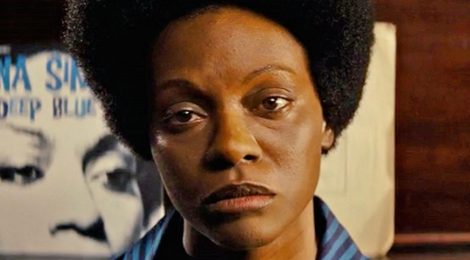
The (Dis)Honesty in Documentary

In his 2011 essay, “Two Spirits, Nádleeh, and LGBTQ2 Navajo Gaze,” Gabriel Estrada highlights several of the discrepancies with the idea that a documentary film is complete fact or reality. A documentary film is still just that– a film– and with it comes many different types of mediation or augmentation of reality. There is still a director, an editor, the subject, a camera, and sometimes scripts, all of which affect what and how the story gets told. In contrast, a fictional narrative film never deals in this deception of reality. The fiction film is often a realist attempt to deal with a theme or event in real life. The difference between documentary and fictional film is that fiction makes the audience assume things are not real and factual, while documentary assumes they are.
In a documentary, there are several different markers that separate the form from fiction. Often it includes interviews, graphics, footage from past events, and sometimes even includes the filmmakers. Information presented in this form is taken as fact by the audience. This is almost always misleading, as the final version of a documentary is likely a small percentage of all the footage the filmmakers gathered. There is a vast amount of information that was deemed tangential, off-topic, unnecessary, or incorrect, that the audience will never see. At the end of a documentary film such as Michael Moore’s Sicko (2007), an audience member is left questioning the United States healthcare system, but not necessarily Michael Moore’s information. Later, after the first round of thought, audiences may wonder: Where did he get these statistics? Are anecdotal stories sufficient evidence of the whole system?
This part of the thought process is often overlooked by general audiences, leaving behind only the “facts” learned in the film. Those “facts” while they are often true, are just as often out of context, just as with Sicko. Moore’s film pushed for universal healthcare in the US without mentioning that half of government spending on healthcare is through assistance programs such as Medicare and Medicaid.
On the other hand, any fictional narrative film simultaneously asks the audience for suspension of disbelief and for questioning what takes place. This idea is best exemplified through the biopic. A biopic offers the perfect lens through which the subtle differences between the documentary and fictional depiction of a story are revealed.
Compare the documentary What Happened, Miss Simone? (2015) to the biopic Nina (2016). While they tell vastly different stories, both films depict the life of celebrity Nina Simone. What Happened, Miss Simone? details the psychological and situational factors that led to Nina Simone’s successful music career and activism. It does so through interviews with people who knew her, family and friends, photographs and footage of Simone and her performances, and Civil Rights Movement events. The documentary was well received, even earning a 2016 Academy Award nomination for Best Documentary .
In contrast, Nina is a biopic that was released amongst a lot of controversy. The story itself was not an issue, it followed Simone as her manager attempted to help her return to making music. The film had major trouble due to its casting of Zoe Saldana as Simone, then using makeup to make her skin look darker. Many critics and the general public decried this practice as blackface, and the film flopped at the box office. A look into the production differences between Nina and What Happened, Miss Simone? may provide reasoning for their contrasting receptions. The largest distinction between the two films seems to be the involvement of Nina Simone’s surviving family. The documentary team was very involved with the family, though they were not a major part of the process for the biopic. They family was even part of the denouncing of Zoe Saldana as Nina. Needless to say, the family’s involvement (should abusers be featured?), definitely shaped how each film treated the subject. While neither film was perfect, both attempted to be truthful.
Comparing documentaries to biopics is a good way to look at how films depict reality and fact. Ultimately both the fictional and documentary tellings fell short of capturing the essence of Nina Simone. Which endeavor was more honest in its attempt? Did the documentary succeed in convincing the audience of its factual basis? DId the biopic manage to capture the emotional “facts” of Nina Simone’s life? Perhaps, both would have been better off using a disclaimer saying: “This is our interpretation of reality. View at your own discretion.”
Comments are closed, but trackbacks and pingbacks are open.